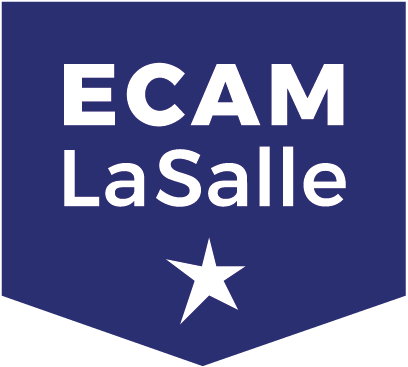 ECAM LaSalle Mechanical and Electrical Engineering Programme
ECAM LaSalle Mechanical and Electrical Engineering Programme

| Données Générales | ||||
|---|---|---|---|---|
| Programme Académique | ECAM LaSalle Mechanical and Electrical Engineering Programme | Responsable(s) Module :
AHMAD Hafiz Muhammad,MAJDOUB Fida |
||
| Type d'EC : Cours | Compressible Flows and Propulsion Systems (Mechanical Pathway) (LIIEEng07ECompFlowPropSystMECHA) | |||
|
TD : 12h00 Cours : 12h00 Travail personnel : 36h00 Durée totale: 70h00 |
Statut
|
Periode
Semester 7 |
Langue d'enseignement :
English |
|
| Objectifs Généraux |
|---|
| 1. Acquire solid knowledge on the different jet propulsion related technologies, applied to various types of vehicles. 2. Ability to use an isentropic model for nozzle design(Convergent and Convergent-Divergent Nozzle). 3. Ability to apply a thermodynamic approach to analyse the behaviour and performance of propulsion systems based on air-breathing turbomachines (turbojets and turbofans). |
| Contenu |
|---|
| • Jet propulsion systems and their performance criteria applied to Air-Breathing and Rocket engines: Thrust; Specific Impulse; Propulsion efficiency; Tsiolkovsky rocket equation; Breguet aircraft equation. • Fundamental of Compressible flows: Mach number and thermodynamics of compressible flows; Shockwaves; Conservation laws; application to Isentropic flows. • Rocket engine design: Stagnation and critical states; operating mode of nozzles in rocket engines; influence of combustion pressure and temperature and of nozzle geometry on the thrust finally produced. Calculation of the resulting specific impulse. • Propulsion systems combustion processes: influence of fuel composition and of Air-Fuel Ratio on the performance of air-breathing combustion processes; use of liquid and solid propellants in rocket engine combustion processes. • Air-breathing propulsion turbomachines: Thermodynamic cycles used in turbojet or turbofans engines; influence of pressure ratios, air and fuel mass flow rates, blades geometries on the engine performances (specific impulse, propulsion efficiency and specific fuel consumption). |
| Prérequis |
|---|
| IBENG-1-MATHS-S1, IBENG-1-MATHS-S2, IBENG-2-MATHS-S3, IBENG-2-FLUID-S3, IBENG-2-FLUID-S4, IBENG-1-THERM-S2 |
| Bibliographie |
|---|
| • J. D. Anderson Jr., Modern Compressible Flow with Historical Perspective, 3rd edition, McGraw-Hill, 2003. • E. A. Baskharone, Principles of Turbomachinery in Air-Breathing Engines, Cambridge University Press, 2006. • G. P. Sutton & O. Biblarz, Rocket Propulsion Elements, 9th edition, Wiley, 2017. |
| Évaluation(s) | |||
|---|---|---|---|
| N° | Nature | Coefficient | Objectifs |
| 1 | Understanding about propulsion systems and Shock wave phenomenon Ability to solve isentropic flow in conduits. |
50 | In this exam following topic will be analyzed: 1. propulsion systems 2. Governing equations for flow induced by disturbance 3. Fundamentals of Compressible flow (Sonic, sub-sonic and super-sonic) through nozzles |
| 2 | Ability to calculate the AFR/LHV and stoichiometric ratios of air-breathing and rocket engines. Solving complex cases of gas turbine, turbojets (Ideal/actual), turpo prop and ramjet engines. |
50 | In this exam, the following topic will be analyzed: 1. Combustion in air breathing engines 2. Combustion in rocket engines 3. Jet engines But we may need to apply the concepts learned in first half of the course. |